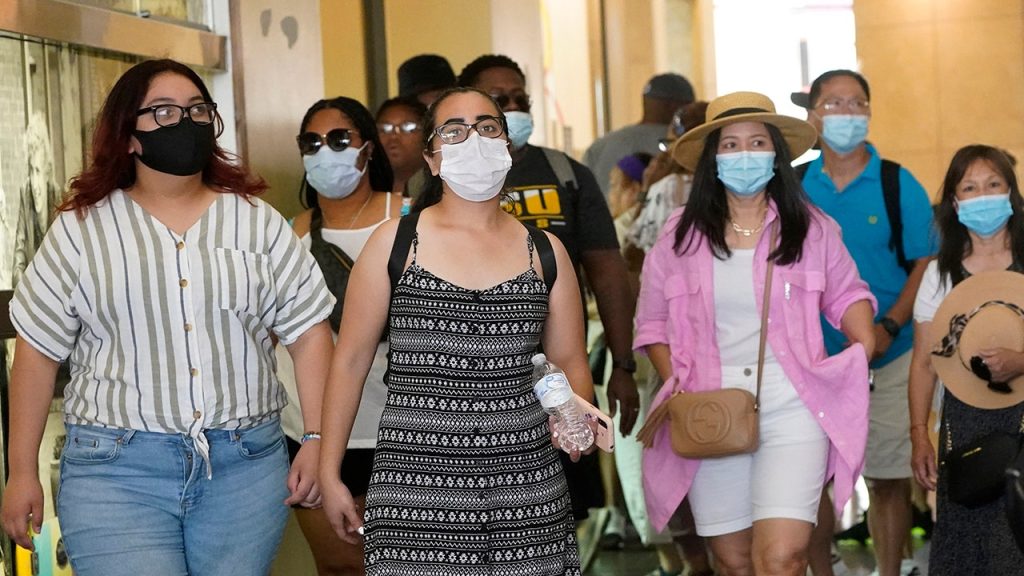Five years since the first reported cases of COVID-19, the pandemic continues to reshape global health and politics. Official reports indicate that over 7 million people have died due to the virus, with more than 3,000 additional fatalities occurring in the past month alone. From political negotiations between global powers to scientific endeavors aimed at understanding the virus, the narrative surrounding COVID-19 remains complex and multi-faceted.
| Article Subheadings |
|---|
| 1) The Initial Outbreak in Wuhan |
| 2) Political Responses to the Pandemic |
| 3) International Reactions and Travel Restrictions |
| 4) Understanding the Virus: Research and Laboratory Investigations |
| 5) The Global Health Crisis Unfolds |
The Initial Outbreak in Wuhan
In late 2019, health officials in Wuhan, China, reported a new strain of viral pneumonia that was resistant to conventional treatments, creating alarm among both local and international health authorities. The earliest cases were linked to the Huanan Seafood Wholesale Market, where animals including snakes and bats were sold. An investigation showed that while many of the initial patients had visited the market, 13 individuals among the first 41 hospitalized did not have any direct links to it, raising questions about the transmission route. The virus, later identified as SARS-CoV-2, was subsequently studied by scientists at the Wuhan Institute of Virology, which holds one of the world’s largest collections of bat coronaviruses.
Political Responses to the Pandemic
As the outbreak progressed, political leaders around the globe struggled to manage the crisis, which soon evolved from a localized issue in China into a worldwide pandemic. U.S. President Donald Trump was engaged in negotiations regarding a trade deal with China at the time, showcasing his optimistic approach towards the relationship with Chinese President Xi Jinping. However, as the virus began to spread, it became increasingly evident that the disease posed significant health risks and required a reevaluation of international relations and public health strategies. In response to the escalating threat, Trump signed a legislation to support pro-democracy activists in Hong Kong, symbolizing a shift in focus that contrasted sharply with the urgency of the pandemic.
International Reactions and Travel Restrictions
As COVID-19 began to spread beyond China’s borders, countries worldwide implemented travel restrictions and quarantine protocols. By the end of January 2020, cases had been reported in Thailand and Japan, prompting the U.S. Centers for Disease Control and Prevention (CDC) to initiate passenger screenings on flights from Wuhan. Despite initially declaring COVID-19 a low public health risk, the situation quickly escalated. By mid-February 2020, over 1,000 deaths had been reported from the virus as it took hold in Italy and other countries. Global leaders faced increasing pressure to respond to the crisis and to prioritize public health over diplomatic relations.
Understanding the Virus: Research and Laboratory Investigations
As the pandemic unfolded, scientific inquiry into the virus intensified. U.S. intelligence agencies noted both natural and laboratory origins as plausible explanations for the emergence of COVID-19. This investigation included scrutiny of the Wuhan Institute of Virology, where researchers were studying bat coronaviruses prior to the outbreak. Reports indicated that several scientists at the lab experienced unexplained respiratory illnesses, casting additional doubts on the biosecurity of the facility. Furthermore, investigations revealed that the virus was isolated and its genetic sequence shared quickly, indicating the urgency among researchers to understand the pathogen and its implications for global health.
The Global Health Crisis Unfolds
In early 2020, as scientists worked tirelessly to decode the virus and its impact, the world began to see widespread disruptions to daily life. Lockdowns were implemented, economies faltered, and healthcare systems were overwhelmed. The World Health Organization (WHO) eventually declared COVID-19 a pandemic in March 2020, signaling that the virus had spread globally and was beyond the control of any single country. The announcement galvanized nations to adopt strict health measures, though the varied response ultimately highlighted significant discrepancies in pandemic preparedness across the globe. By the midpoint of March, more than 114 countries reported over 118,000 confirmed cases, with thousands of deaths attributed to the virus.
| No. | Key Points |
|---|---|
| 1 | Over 7 million deaths recorded globally since the beginning of the pandemic. |
| 2 | Initial cases traced back to Wuhan, China, with ties to the Huanan Seafood Market. |
| 3 | U.S. intelligence agencies assess plausible origins of the virus, including lab accidents. |
| 4 | Global travel restrictions and public health measures were implemented rapidly in response to the outbreak. |
| 5 | The WHO declared COVID-19 a pandemic in March 2020, marking a critical moment in global health history. |
Summary
The complex narrative of COVID-19 spans multiple dimensions, connecting the dots between health, politics, and global relations. As the pandemic continues to linger five years later, the experiences gained from this crisis have underscored the need for enhanced global cooperation and preparedness in health emergencies. Understanding the origins and responses to COVID-19 will remain pivotal in ensuring that the world is better equipped to tackle future public health threats.
Frequently Asked Questions
Question: What are the key characteristics of COVID-19?
COVID-19 is caused by the SARS-CoV-2 virus and is known for symptoms like fever, cough, fatigue, and in severe cases, difficulty breathing. It spreads primarily through respiratory droplets.
Question: How has the pandemic impacted global travel?
The pandemic led to unprecedented travel restrictions worldwide, as countries closed borders and implemented quarantine protocols to limit the spread of the virus, significantly lowering international travel rates.
Question: Why is understanding the virus’s origins important?
Understanding the origins of COVID-19 helps inform public health strategies, improves preparedness, and addresses biosecurity concerns in laboratories worldwide to mitigate potential future outbreaks.
